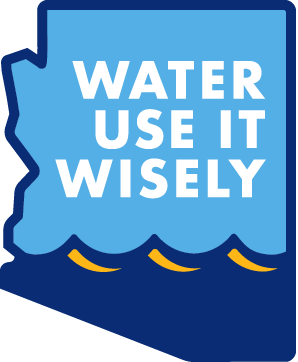Workplace Tips
- #10
Install an instant water heater near your kitchen sink so you don’t have to run the water while it heats up. This also reduces energy costs.
- #29
Upgrade older toilets with water-saving WaterSense® labeled models.
- #39
Install water-saving aerators on all of your faucets.
- #41
Look for WaterSense® labeled toilets, sink faucets, urinals and showerheads.
- #54
Hire a GreenPlumber® to help reduce your water, energy, and chemical use.
- #57
See a leak you can’t fix? Tell a parent, teacher, employer, or property manager, or call a handyman.
- #59
Make suggestions to your employer or school about ways to save water and money.
- #143
Some commercial refrigerators and ice-makers are cooled with water. Upgrade to air-cooled appliances for significant water savings.
- #144
Post a hotline in bathrooms and kitchens to report leaks or water waste to facility managers or maintenance personnel.
- #145
Create a suggestion and incentives system at your organization to recognize water-saving ideas.
- #146
Include a water-saving tip in your employee newsletter. Find 100+ tips at wateruseitwisely.com.
- #147
Implement a water management plan for your facility, then educate employees on good water habits through newsletters and posters.
- #148
Publish your organization’s monthly water use to show progress toward water-saving goals.
- #149
Invite your water utility conservation staff to your organization for Earth Day and other environmental events to help promote water savings.
- #150
Water audit your facility to find out your recommended water use, then monitor your utility bills to gauge your monthly consumption.
- #151
Have maintenance personnel regularly check your facilities for leaks, drips and other water waste.
- #152
If you use processed water in your business or facility, look into water recycling.
- #153
Contact your water utility to see if rebates are available for purchasing water-efficient fixtures, equipment or for facility audits.
- #154
Consider and compare water use when purchasing ice makers, dishwashers, reverse osmosis units, coolers and cleaning equipment.
- #155
Become or appoint a water ambassador within your organization who creates, implements and maintains your water conservation program.
- #156
Become a proud WaterSense® partner and let all your customers know.
- #157
As part of the WaterSense® Fix-A-Leak Week in March, plan an employee campaign to look for leaks.
- #158
Determine how your on-site water is being used by installing sub-meters where feasible, then monitoring for savings.
- #159
Conduct a facility water use inventory and identify water management goals.
- #160
Don’t forget hidden water use costs, like energy for pumping, heating and cooling, chemical treatment, and damage and sewer expenses.
- #161
Show your company’s dedication to water conservation through a policy statement. Commit management, staff and resources to the effort.
- #162
Shut off water to unused areas of your facility to eliminate waste from leaks or unmonitored use.
- #163
Create a goal of how much water your company can save and plan a celebration once that goal is met.
- #164
Ask employees for suggestions on saving water and give prizes for the best ideas. Incentivize it!
- #165
Write feature articles on your employee website that highlight water-saving ideas and successes.
- #166
Test your co-workers or employees on topics like xeriscape, WaterSense®, and high-efficiency toilets. See how water-wise they are.
- #167
Hire a WaterSense® irrigation partner to help with your landscape.
- #168
Saving water on your landscape adds up quickly. Send the person in charge of your landscape to an irrigation workshop.
- #169
Marry the weather with your landscape water use. Water use should decrease during rainy periods and increase during hot, dry periods.
- #170
Visit your local Water Conservation office’s website to get information on programs available to businesses.
- #171
Make sure your contract plumber and/or maintenance personnel knows about GreenPlumbers®.
- #172
Ask your company to support water conservation events and education. ProjectWet hosts local events throughout the country.
- #173
Support Tap Into Quality and forgo those plastic water bottles to lower your carbon footprint.
- #174
Scrape dishes rather than rinsing them before washing.
- #175
Use water-conserving icemakers.
- #176
A recent study showed that 99% of business managers surveyed ranked water conservation as a “top five” priority over the next decade.
- #177
If your facility relies on cooling towers, have maintenance maximize cycles of concentration by providing efficient water treatment.
- #178
Be sure your irrigation system is watering only the areas intended, with no water running onto walks, streets or down the gutter.
- #179
While cleaning sidewalks, a hose and nozzle use 8-12 gallons of water per minute. A pressurized Waterbroom® uses closer to 3 gallons.
- #180
Inspect your landscape irrigation system regularly for leaks or broken sprinkler heads and adjust pressures to specification.
- #181
Give your landscape proper amounts of irrigation water. Determine water needs, water deeply but infrequently, and adjust to the season.
- #182
Establish a monthly water budget for your landscape based on the water needs of your plants.
- #183
Limit turf areas at your facility. Instead, landscape using xeriscape principles to cut water use in half.
- #184
Put decorative fountains on timers and use only during work or daylight hours. Check for leaks if you have automatic refilling devices.
- #185
Wash company vehicles at commercial car washers that recycle water.
- #186
Wash company vehicles as needed rather than on a schedule. Stretch out the time in between washes.
- #187
Consider turning your high-maintenance water feature/fountain into a low-maintenance art feature or planter.
- #188
When buying new appliances, consider those that offer cycle and load size adjustments. They are more water and energy efficient.
- #189
Support projects that use reclaimed wastewater for irrigation and industrial uses.
- #190
When ice cubes are leftover from your drink, don’t throw them out. Pour them on a plant.

